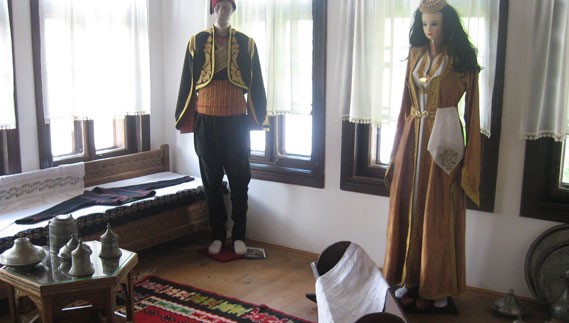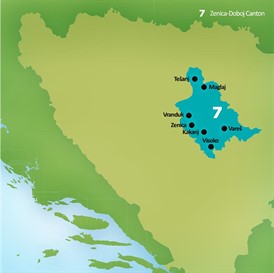

Zenica-Doboj Canton
Zenica-Doboj Canton
An exceptional historic treasure of this area is Stari grad Vranduk where the historical display presents the medieval period.
Authentic pictures of the past
The Museum of the City of Zenica has a tradition of five decades, and since 2007 it is housed in a new representative museum building. The museum has an archaeological, historical and ethnological collection. It organizes a number of workshops, promotes a multimedia center and realizes educational and promotional programs from the fields of science and arts.
An exceptional historic treasure of this area is Stari grad Vranduk where the historical display presents the medieval period in Bosnia and Herzegovina. Vranduk was first a governor's and then a royal city where the kings of Bosnia received delegations, signed agreements and granted charters. Over the centuries the fortress has preserved its original form that is reminiscent of the early examples of European fortresses. Inside the walls of Stari grad Vranduk numerous archaeological finds from the Middle Ages and Osman period have been discovered: vessels, jewelry, coins, tools, spurs...
During the half century of its activities, the Regional Museum of Visoko strives to present museum artifacts collected from the greater Visoko area and other municipalities, through thematically diverse collections. The museum holdings consist of an archaeological, geological-paleonthological, ethnological, numismatic, art, medieval collection, as well as the collection of artifacts from World War II. Especially interesting and valuable feature is the archive from the Osman and Austro-Hungarian period. The museum regularly organizes presentations of old crafts, demonstrating how small wood products, pottery, traditional peasant footwear opanci and combs are made.
Tešanj Museum is the youngest museum in the Zenica-Doboj Canton. Its collections displayed in Stari grad Tešanj, unique historic building of Eminagić dvor and stećak necropolis offer visitors an authentic picture of a typical Bosnian čaršija, town where different influences of eastern and western civilizations are visible.
The monastery's treasury in Kraljeva Sutjeska abounds in metal and textile utilitarian objects, in addition to some thirty artistically valuable chalices. The oldest ones are late-Gothic, one of which dates from 1416. The monastery is very rich in cultural-historical and art objects: numerous archive documents, valuable old books, collections of paintings, and artistically crafted metal and textile items.











